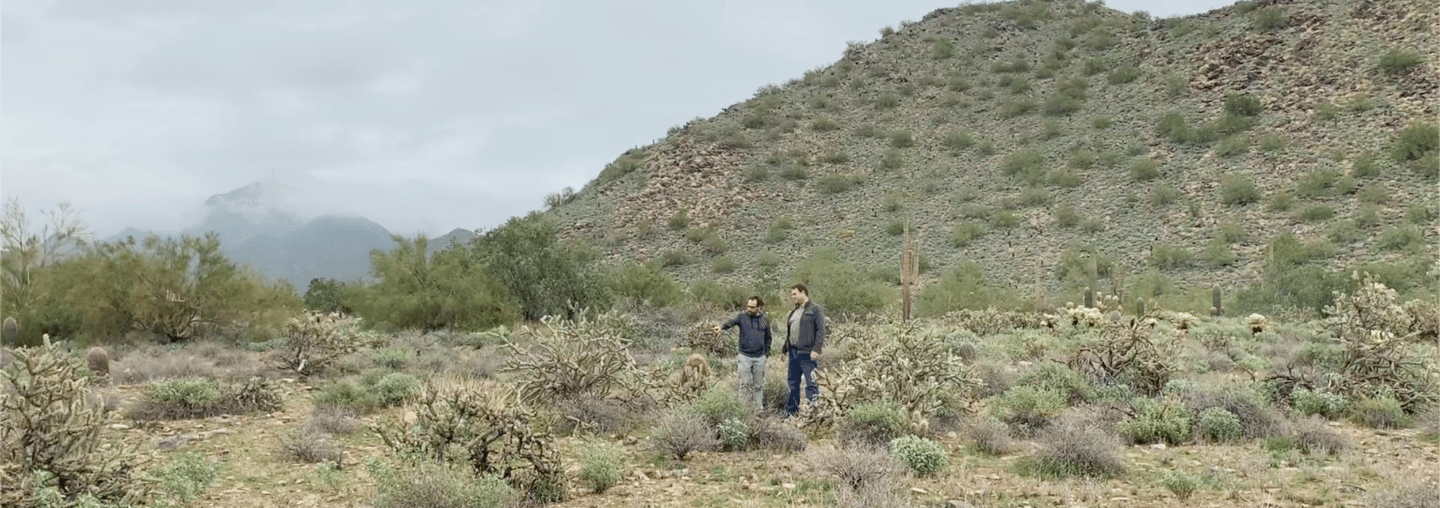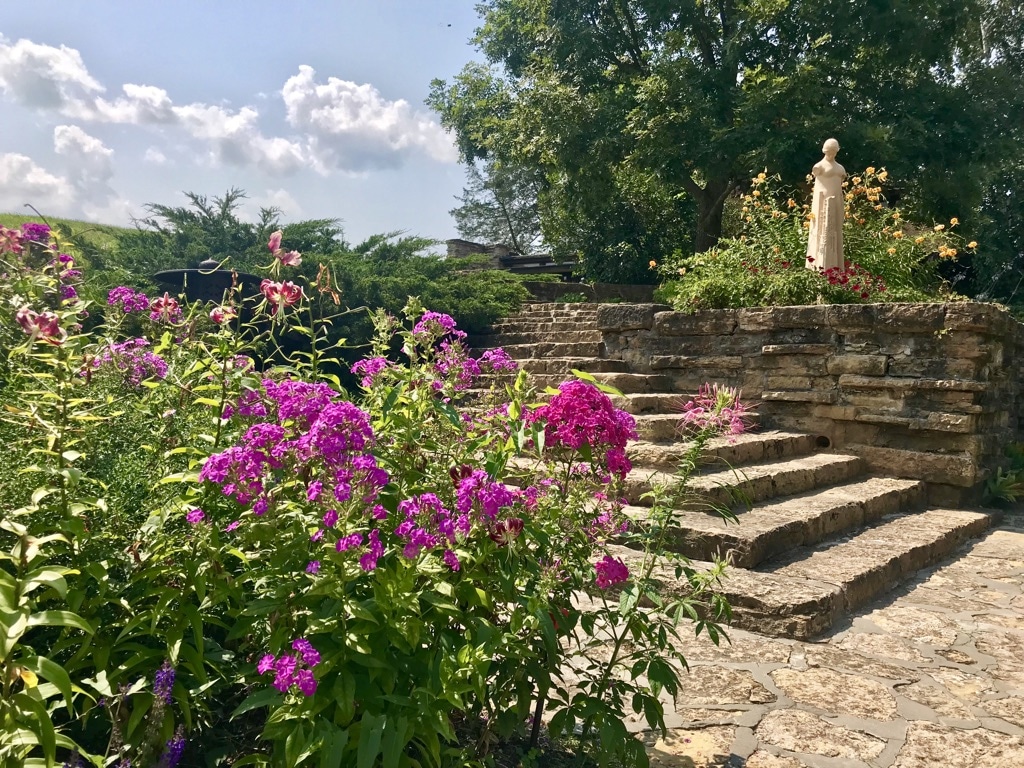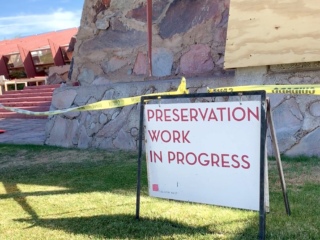
Living with Nature: Xeriscaping and Harmonious Landscape Architecture
Frank Lloyd Wright Foundation | Feb 4, 2020
As the Frank Lloyd Wright Foundation embraces more sustainable, innovative practices in our preservation work and beyond, we’re sharing some of these methods, and providing some tips on how you can incorporate these practices into your own home and life. Here, we discuss xeriscaping and how Frank Lloyd Wright designed nature-informed landscapes.
In many of Frank Lloyd Wright’s built works, he carefully and thoughtfully took the natural environment into consideration. The landscape was often an extension of Wright’s principles and philosophies regarding organic architecture and the nature of materials. Today, the concept of xeriscaping, the practice of using native, drought-resistant plants and arranging them in water-saving ways, is becoming increasingly popular.
In this edition of Living with Nature: Sustainable Practices from the Frank Lloyd Wright Foundation, we spoke with Chris Winters, a landscape architect based out of Arizona, to explore xeriscaping, and turn to Wright’s philosophies, designs, and work to gain a deeper understanding of how we can efficiently live and build in harmony with the natural environment.

Although Wright may not have realized it at the time, his designs paved the way for the sustainable landscaping and xeriscaping movements in the 21st century. Although Wright incorporated these ideas into his work all over the country, two shining examples of these principles at work can be found at his two personal homes, Taliesin in Wisconsin and Taliesin West in Arizona.
In the lush hills of Wisconsin, Wright built his home, studio, and 800-acre agricultural estate with not only a deep appreciation of the surrounding nature, but a strong, longstanding connection to the Driftless Region. Because Wright spent many summers in his teen years farming in Wisconsin, he became keenly aware of the patterns and rhythms of nature.
When constructing and designing Taliesin, he took the things he learned from a young age and applied them through his use of native, local, materials, his strategic siting of the structures, and his use of plants indigenous to the area.
In the arid climate of Arizona, Wright put these same ideas to work at his winter home and desert laboratory by incorporating natural stone from the surrounding desert, and choosing native, drought-resistant plants like saguaro, cholla, and more. Wright revered the desert and it’s natural beauty, stating in a 1952 talk, “A characteristic thing in the desert here is, of course, the desert itself. And I have always regarded it as the greatest lesson in construction. Form following function if you like — or form and function being one — that exists. The saguaro is the greatest example of a skyscraper that was ever built.”
Many perceive xeriscaping as sparse, dull-looking landscaping, however, Wright’s landscapes show that beauty can easily be achieved with a little creativity and thoughtfulness. With these two examples in mind, when designing our own landscapes at our homes, businesses, and elsewhere, we can employ similar principles used by Wright and create landscape designs that are harmonious, elegant, appropriate, and environmentally friendly. Xeriscaping can also save money by reducing the overall cost for future maintenance, water usage, and energy use.

Here are some more great tips on how you can incorporate these ideas into your own home and life:
- Select and research environment-appropriate plants for your landscaping. When designing your landscape at your home or business, be thoughtful in your choice of plants and the placement of them. Create groupings or zones of plants with similar water and light requirements, and place them in an area that matches these requirements.
- Limit turf areas, or select native grasses. Grasses and turf are generally large users of water, with nearly 50% of all water usage in American households being used for watering lawns. By limiting turf as much as possible, or selecting indigenous grasses, you can eliminate a great amount of water usage.
- Meet with a landscape architect to explore how you can transform your landscaping into a more efficient design. Let an expert guide you on how you can move toward a xeriscaped landscape.
Learn more about the sustainable practices we’re using at Taliesin and Taliesin West, and to glean even more tips on how you can help contribute to a more sustainable, beautiful world.
read all of the living with nature blogs
Living with Nature: Sustainable Practices from the Frank Lloyd Wright Foundation was a year-long campaign where we be shared sustainable practices and how they play an important part in conservation for National Historic Landmark sites, like Taliesin West in Arizona and Taliesin in Wisconsin. We hope you enjoy the helpful tips we’ll share on how you can incorporate these practices into your own life, to help you live a more green life.




